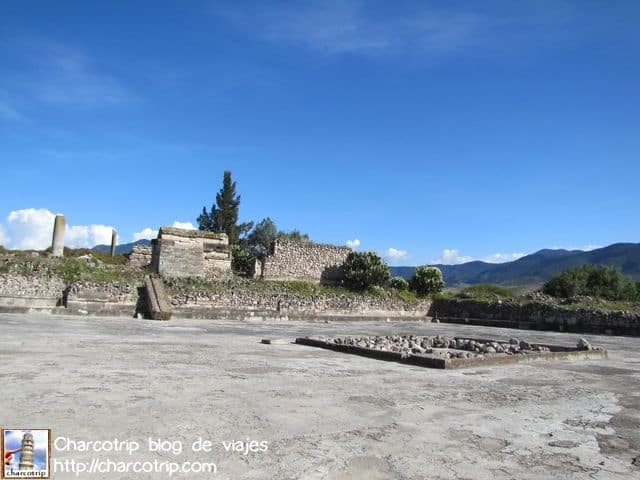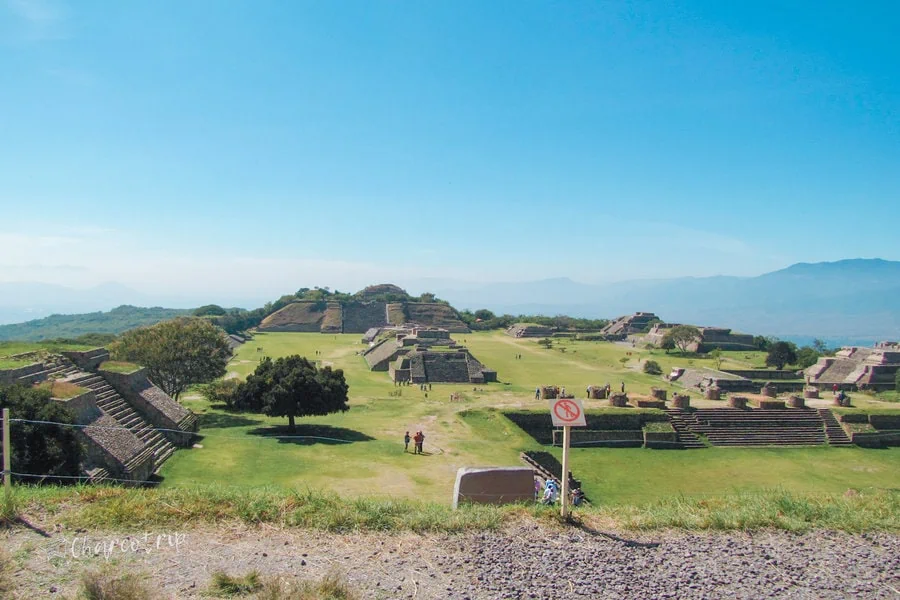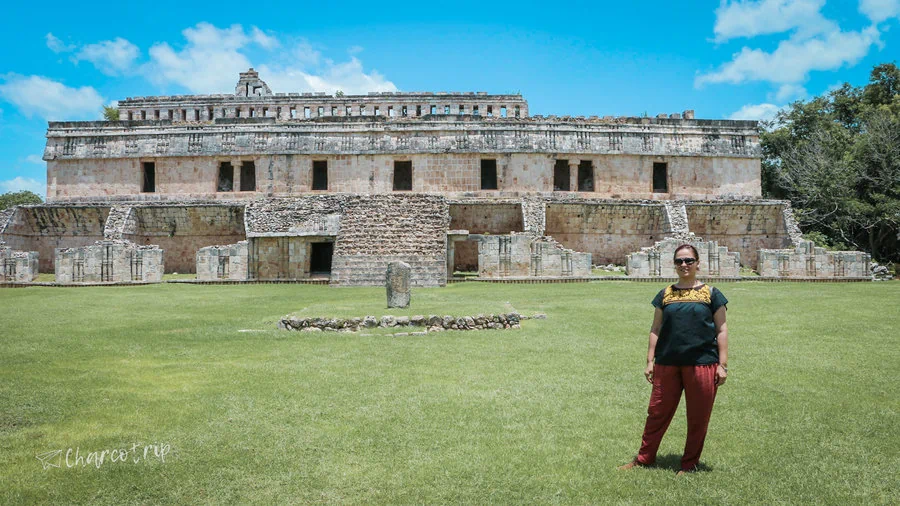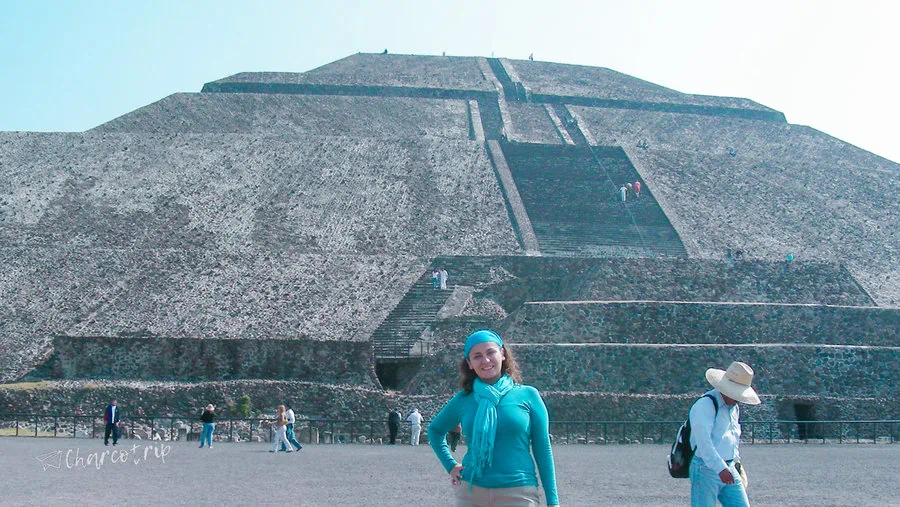Visit to the archaeological site of Mitla which is characterized by the shapes that can be seen in the buildings, the so-called fretwork that are carefully studied by archaeologists.
Are you curious about the Fretwork (Grecas) of Mitla and looking to learn more? If so, then this article is perfect for you! The fretwork of Mitla are intricate openwork designs found at the Mitla archaeological site in Oaxaca, Mexico. These designs are widely known for their beauty and intricacy and more than just decorations, these designs have greater symbolic meaning that many visitors come to explore.
An archaeological site that, despite not being protected or part of the UNESCO heritage, is worth visiting. The enigma of its fretwork is already reason enough to want to see it. We refer to the archaeological site of Mitla (and its fretwork).

Mitla is the second-most important archeological site in the state of Oaxaca in Mexico, and the most important of the Zapotec culture.
Information to visit the archaeological site of Mitla
How much does it cost?
90 pesos per person (current price on the INAH website)
Which are the schedules?
Tuesday to Saturday from 10:00 AM to 4:00 PM and Sunday from 10:00 AM to 2:00 PM
Can you take photos?
Yes.
Looking for a flight to Mexico?
Book your tickets at the best price here!
How to get to Mitla?
We arrived by private transport, since the visit to this site was part of a day tour to visit Hierve el Agua, Tule, Mitla and try mezcal.
If you want to take a shorter tour than the one we took, you can take a tour that only takes you to Mitla, Teotitlán del Valle and the Mezcal factory.
With public transport, you can take a bus from the central Oaxaca destination to the town of Mitla, if you are not in the state capital, you can buy your bus tickets in advance to get to Oaxaca. The problem is that they don’t stop at the archaeological site, so you’d have to take a taxi afterward.
The other option is to arrive at your own in a rental car. To get to Mitla you have to take the Pan-American highway, in the direction of the Tehuantepec isthmus; 42 kilometers later you will see a deviation on the right that leads directly to the archaeological zone (source: Sic México).
Visiting the archaeological zone of Mitla
First I will tell you a prelude to the visit, necessary to understand why I did not take as many photos as I would have liked: After having been in Hierve el Agua, we went to a restaurant where I ate about 4 different types of mole, my stomach was very full, but happy, and so we went to Mitla.
Mitla, which had its peak between 950 and 1521 AD. C. is characterized by the forms that can be seen in the buildings. The so-called frets that are carefully studied by archaeologists.
Mitla has three names, depending on the language; in Nahuatl it is the Mictlán or place of the dead; in Zapotec it is Lyobáa.
The person who showed us the site explained that a research and preservation work was being carried out that consists of copying the shapes of all the frets, to study their meaning, but also to be able to recreate it in case the site fall into ruins.
It must be considered that the site is located in a seismic zone and that, unfortunately, it is not protected.



The houses are too close
While we were visiting, we realized that there were houses too close. Something we had not seen in other archaeological sites. The guide told us that because the area is not protected like Teotihuacan or Monte Alban, there are private properties even within the site, like the white house in the background. Regrettable.

The fretwork of Mitla
Upon entering one of the rooms of the place, we were able to see how they work so that these wonderful fretworks that are unique to Mesoamerica are not lost. The meaning of some has already been more or less deciphered, they represent the rain and the sky.
Mitla’s frets represent human existence and its relationship with divinity. Thus, through this system they symbolized gods like Quetzalcóatl, as a snail, and Tláloc or Cosijo, presented as lightning in homage to rain, fertility, wisdom and power.
The geometric patterns, called grecas in Spanish, are made from thousands of cut, polished stones that are fitted together without mortar. The pieces were set against a stucco background painted red.

Saying goodbye to Mitla
The visit was short, the site was about to close, but we took advantage of the last moments in Mitla.
At that time my stomach started to give me problems, I already felt uncomfortable during the entire visit to the site, but before we left it started to get worse. So, after this tour, we did our last shopping and then to the hotel in Oaxaca, which luckily was quite comfortable.
So we say goodbye to Mitla and its mysterious fretwork.

In conclusion, the visit to the Grecas of Mitla and its archaeological zone in Oaxaca is an unforgettable experience. It’s a unique way to learn about the ancient civilizations that once flourished in this area, as well as appreciate its rich history and culture.
Some of the links in this article include affiliate links. This means that if you buy a product listed here by following these links, we'll receive a commission. The use of this link does not increase the final price for you and thus helps us to keep our blog alive.



